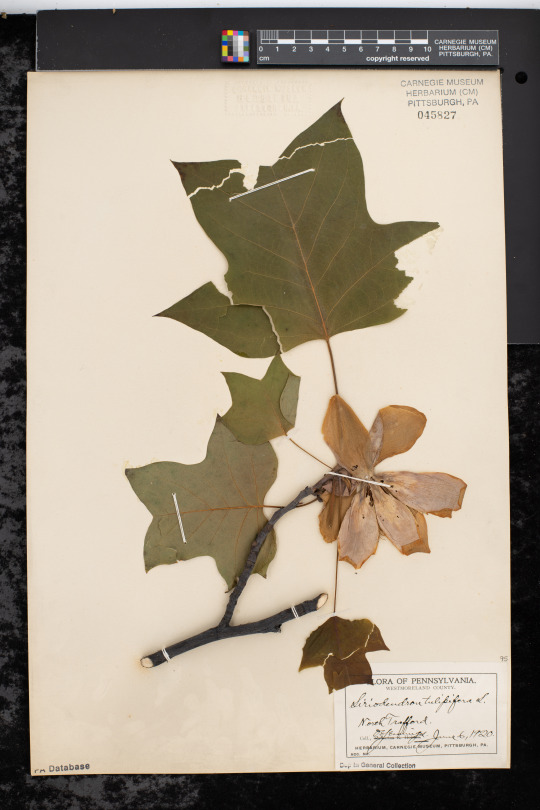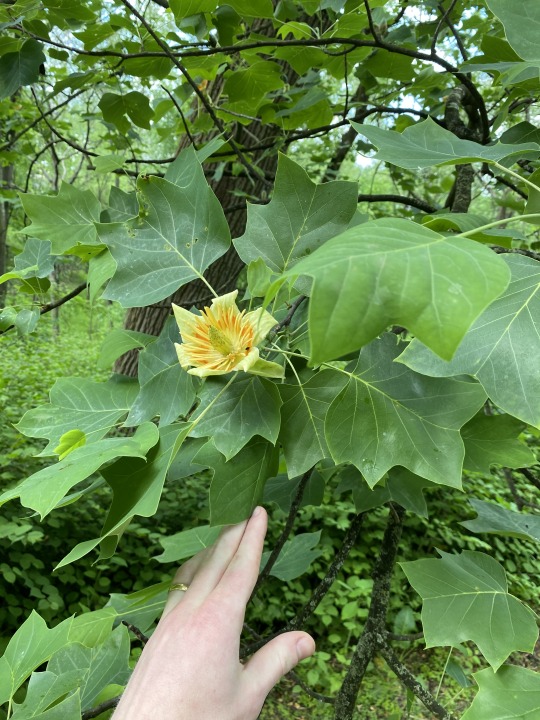
Collected on this Day in 1920
Your tulips may be long gone as spring has faded, but tulip trees are in full force! Although it’s hard to catch a glimpse of them way up in the canopy, tulip tree flowers are just as stunning. Completely unrelated to tulips, Liriodendron tulipifera (called tulip tree, tulip poplar, or sometimes yellow poplar) is named such because its leaves have a distinctive shape reminiscent of tulips.

Found across eastern North America, Tulip trees are one the tallest and fast-growing trees native to Pennsylvania, growing up to nearly 200 feet tall! Tulip trees are relatively shade intolerant and therefore are especially common in young forests (early successional). However, the species can still be found in older forests too. Its tall straight trunks can be impressive, and its wood is widely used by woodworkers, who often refer to it as “poplar.” The tree is not related to true poplars (Populusspecies), which are in the willow family, Salicaceae. Tulip trees are a member of the magnolia family (Magnoliaceae). This beautiful specimen was collected on June 6, 1920 near Trafford, Pennsylvania by Otto Jennings. Jennings was an influential botany curator at the museum for many years.
Find this stunning specimen here.
Check back for more! Botanists at the Carnegie Museum of Natural History share digital specimens from the herbarium on dates they were collected. They are in the midst of a three-year project to digitize nearly 190,000 plant specimens collected in the region, making images and other data publicly available online. This effort is part of the Mid-Atlantic Megalopolis Project (mamdigitization.org), a network of thirteen herbaria spanning the densely populated urban corridor from Washington, D.C. to New York City to achieve a greater understanding of our urban areas, including the unique industrial and environmental history of the greater Pittsburgh region. This project is made possible by the National Science Foundation under grant no. 1801022.
Mason Heberling is Assistant Curator of Botany at Carnegie Museum of Natural History. Museum employees are encouraged to blog about their unique experiences and knowledge gained from working at the museum.
